
International Journal of Particle Therapy
Scope & Guideline
Pioneering Knowledge in Radiology and Atomic Physics
Introduction
Aims and Scopes
- Clinical Applications of Particle Therapy:
The journal emphasizes research on the clinical applications of proton and carbon ion therapies across various cancer types, assessing their effectiveness and safety compared to traditional photon therapies. - Radiobiological Studies:
It investigates the radiobiological mechanisms underlying particle therapy, exploring how different radiation types affect tumor and normal tissue responses. - Technological Innovations and Methodologies:
The journal covers advancements in treatment planning, delivery techniques, and imaging methods that enhance the precision and efficacy of particle therapy. - Patient Outcomes and Quality of Life:
Research on long-term patient outcomes, including survivorship, quality of life, and toxicity profiles associated with particle therapy, is a core focus. - Health Economics and Accessibility:
The journal also addresses the economic aspects of particle therapy, including cost-effectiveness analyses and accessibility issues for patients.
Trending and Emerging
- Artificial Intelligence and Machine Learning in Treatment Planning:
There is a growing trend towards integrating artificial intelligence and machine learning techniques in treatment planning and optimization for particle therapy, highlighting the role of technology in enhancing precision and outcomes. - Personalized Medicine Approaches:
Research is increasingly focusing on personalized medicine, tailoring particle therapy based on individual patient characteristics and tumor biology to improve treatment efficacy. - Longitudinal Studies on Outcomes and Toxicity:
Emerging studies are emphasizing long-term follow-up and the assessment of late toxicities associated with particle therapy, indicating a shift towards understanding the long-term impacts of treatments. - Combination Therapies:
There is a rising interest in exploring combination therapies that integrate particle therapy with immunotherapy, chemotherapy, or targeted therapies, aiming for synergistic effects in cancer treatment. - Patient-Centered Care and Quality of Life Studies:
Research focusing on patient-centered outcomes, including quality of life assessments and patient-reported outcomes, is becoming increasingly prominent, reflecting a holistic approach to cancer care.
Declining or Waning
- Traditional Radiotherapy Comparisons:
Research comparing particle therapy with traditional photon therapies has decreased, possibly due to a growing consensus on the advantages of particle therapies, leading to less need for comparative studies. - Non-oncological Applications:
There has been a noticeable decline in studies focusing on non-oncological applications of particle therapy, such as its use in benign conditions, which may have been overshadowed by more pressing oncological research. - Earlier Historical Perspectives:
Papers focusing on historical reviews of particle therapy have become less common, as the field moves towards more contemporary and forward-looking research.
Similar Journals

STRAHLENTHERAPIE UND ONKOLOGIE
Elevating standards in oncology and radiology research.STRAHLENTHERAPIE UND ONKOLOGIE is an esteemed journal published by Springer Heidelberg, focusing on critical advancements and research in the fields of Oncology and Radiology. Established in 1986, this journal has carved its niche within the scientific community, ranking in the Q1 category for Radiology, Nuclear Medicine and Imaging, and Q2 for Oncology as of 2023. With an ISSN of 0179-7158 and E-ISSN 1439-099X, it serves as an essential resource for researchers, professionals, and students dedicated to the complexities of cancer treatment and radiation therapy. While the journal operates under a subscription model, its broad international readership values its rigorous peer-review process and comprehensive coverage of pivotal studies. STRAHLENTHERAPIE UND ONKOLOGIE continues to enhance its impact in the domains of oncology and radiology, as evidenced by its commendable Scopus rankings, including a 76th percentile in Radiology and a 65th percentile in Oncology. Its commitment to disseminating innovative research solidifies its role as a cornerstone in the ongoing quest to improve patient care and therapeutic techniques.

Turk Onkoloji Dergisi-Turkish Journal of Oncology
Empowering oncology: Bridging Turkish research to global discourse.Turk Onkoloji Dergisi - Turkish Journal of Oncology, published by KARE PUBL, serves as a vital platform in the field of oncology, specifically catering to the Turkish-speaking research community and contributing to global discourse. With an ISSN of 1300-7467, this journal, which has been in circulation since 2007 and continues until 2024, recognizes the importance of advancing medical knowledge in cancer research through rigorous peer-reviewed articles. Although currently positioned in the Q4 category of oncology journals with a Scopus rank of #344 out of 404, the journal is dedicated to fostering significant research insights and innovative perspectives on cancer treatment and prevention. While it does not currently offer open access, its content is essential for professionals, researchers, and students aiming to enhance their understanding of oncology developments in Turkey and beyond. The Turkish Journal of Oncology not only aspires to improve the quality of cancer care but also strives to enhance collaboration among researchers, thereby influencing future oncology practices.
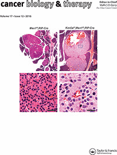
CANCER BIOLOGY & THERAPY
Transforming cancer treatment through cutting-edge research.CANCER BIOLOGY & THERAPY is a premier open-access journal published by Taylor & Francis Inc, dedicated to advancing the field of cancer research and treatment. Since its inception in 2002, the journal has evolved to provide a platform for innovative research and groundbreaking findings, addressing critical aspects of cancer biology, pharmacology, and molecular medicine. With an impressive impact factor and recognition as a Q2 journal in vital categories such as Cancer Research, Oncology, and Pharmacology, it holds significant standing in Scopus rankings, reflecting its influence and commitment to disseminating high-quality research. Offering researchers, professionals, and students a wealth of knowledge, CANCER BIOLOGY & THERAPY stands at the forefront of the fight against cancer, presenting the latest developments and therapeutic strategies vital for improving patient outcomes. Accessible to all since 2022, this journal is a must-read for anyone involved in the multifaceted arena of cancer research and treatment.
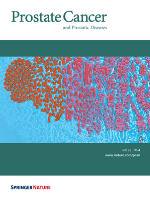
PROSTATE CANCER AND PROSTATIC DISEASES
Connecting research and practice for prostate health.PROSTATE CANCER AND PROSTATIC DISEASES, published by SpringerNature, is a prestigious international journal dedicated to advancing knowledge in the fields of cancer research, oncology, and urology, as evidenced by its Q1 rankings in 2023. Established in 1997, this journal has become a vital resource for researchers, clinicians, and healthcare professionals, offering impactful research and clinical insights on prostate health and disease. With its focus on innovative studies and comprehensive reviews, it addresses critical challenges in the management and treatment of prostate cancer, driving improvements in patient care globally. The journal's standing is further supported by its impressive Scopus rankings, placing it in the top tier of its categories. Readers can access high-quality, peer-reviewed articles that contribute significantly to ongoing medical practices and improve therapeutic strategies for prostate-related health issues.

Oncology and Therapy
Pioneering new frontiers in oncology and therapeutic strategies.Oncology and Therapy, published by SPRINGER, is a distinguished open-access journal that has been dedicated to the dissemination of innovative research in the field of oncology since its inception in 2015. With an ISSN of 2366-1070 and an E-ISSN of 2366-1089, the journal serves as a vital platform for the latest advancements in cancer treatment and therapeutic approaches. Based in Switzerland, this journal is indexed in Scopus, where it currently holds a respectable rank of #236 out of 404 in Medicine - Oncology, placing it in the 41st percentile, indicating its relevance and contribution to the field. Oncology and Therapy is recognized for its rigorous peer-review process and its commitment to open-access publishing, ensuring that high-quality research is accessible to a global audience. The journal’s current categorization in the Q2 quartile highlights its importance and credibility within the oncology community, making it an essential resource for researchers, clinicians, and students aiming to stay at the forefront of cancer research and therapy.
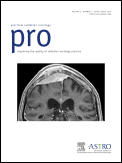
Practical Radiation Oncology
Fostering Excellence in Radiation TherapyPractical Radiation Oncology is a premier journal published by Elsevier Science Inc., focusing on the critically important fields of Oncology and Radiology, Nuclear Medicine, and Imaging. With an ISSN of 1879-8500, this journal serves as an essential resource for professionals and researchers dedicated to advancing the practice and research of radiation oncology. Established in 2011 and continuing through 2024, it has quickly gained recognition, achieving a prestigious Q2 ranking in Oncology and an exceptional Q1 ranking in Radiology, Nuclear Medicine, and Imaging as of 2023. The journal, housed in New York, USA, provides a platform for innovative research and practical insights, aimed at enhancing therapeutic practices and improving patient outcomes. As part of its commitment to fostering scientific dialogue, it also features a range of articles, reviews, and clinical studies that cater to the diverse interests of its readers. Hard-copy availability combined with digital access ensures a broad reach for the latest advancements in the field.

ACTA ONCOLOGICA
Shaping the future of cancer treatment and research.ACTA ONCOLOGICA is a prestigious multidisciplinary journal published by Medical Journal Sweden AB, dedicated to advancing cancer research and clinical practice. As a key resource in the field of oncology, the journal aims to publish high-quality articles that cover significant developments in cancer biology, treatment modalities, and innovative imaging techniques. With an ISSN of 0284-186X and an E-ISSN of 1651-226X, ACTA ONCOLOGICA operates in the United Kingdom and is recognized for its substantial impact, currently holding a Q2 ranking in the categories of Hematology, Medicine (miscellaneous), Oncology, and Radiology, Nuclear Medicine and Imaging in 2023. The journal’s commitment to disseminating pivotal research is reflected in its inclusion in Scopus, with rankings placing it in the top half of its fields. Though it does not currently offer Open Access, it remains an essential resource for researchers, healthcare professionals, and students seeking to stay informed on the latest trends and findings in oncology. Established in 1963, the journal continues to be a cornerstone of cancer research well into 2024.
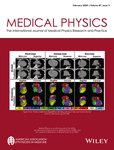
MEDICAL PHYSICS
Advancing the Frontiers of Biophysics and MedicineMEDICAL PHYSICS, published by WILEY, stands as a leading journal in the fields of biophysics, medicine, and radiology, boasting an impressive impact factor and classified within the prestigious Q1 category across multiple relevant domains. With its ISSN 0094-2405 and E-ISSN 2473-4209, the journal has been a vital resource since its inception in 1974, leading the discourse well into 2024. Hailing from the United States, MEDICAL PHYSICS serves a diverse academic audience, comprising researchers, clinicians, and students eager to engage with the latest advancements and methodologies. The journal’s authoritative presence is underscored by its Scopus rankings, placing it among the top percentile in both Medicine and Biophysics, marking it as an essential scholarly platform for innovative research and critical reviews. While not currently an Open Access journal, its commitment to curating high-quality articles ensures that readers can access groundbreaking insights into medical imaging, treatment protocols, and the theoretical underpinnings of medical physics. Explore the intersection of technology and healthcare through the esteemed pages of MEDICAL PHYSICS.
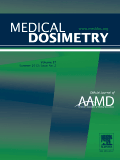
Medical Dosimetry
Empowering Professionals with Essential Dosimetry KnowledgeMedical Dosimetry is a distinguished journal published by Elsevier Science Inc, dedicated to the advancing field of medical dosimetry and its applications within oncology, radiology, and nuclear medicine. With its ISSN 0958-3947 and E-ISSN 1873-4022, this journal serves as a crucial resource for researchers and professionals aiming to enhance their understanding of radiation treatment planning and dosage calculations. Encompassing a comprehensive range of topics from clinical dosimetry to technology assessment, Medical Dosimetry has been disseminating significant findings since its establishment in 1988, contributing to the continuous development of best practices in patient care and safety. The journal currently holds a Q3 ranking in various categories, reflecting its pivotal role in the research community, while not currently offering open access, it remains an essential reference for scholars advancing the techniques utilized in medical imaging and treatment. By fostering a platform for high-quality research, it aims to bridge the gap between theoretical studies and clinical applications, making it a vital addition to any medical library.
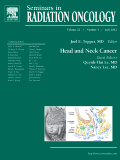
SEMINARS IN RADIATION ONCOLOGY
Exploring the Future of Radiation TherapySEMINARS IN RADIATION ONCOLOGY is a premier journal published by W B SAUNDERS CO-ELSEVIER INC, dedicated to advancing the field of radiation oncology through high-quality research and comprehensive reviews. With an impressive impact factor and a notable HIndex, this journal holds a prominent place within the academic community, particularly illustrated by its Q2 ranking in both Cancer Research and Oncology, and a Q1 ranking in Radiology, Nuclear Medicine, and Imaging as of 2023. Since its inception in 1991, the journal has served as a vital resource for researchers, clinicians, and healthcare professionals, facilitating the exchange of innovative ideas and practices that shape the future of cancer treatment. While the journal is not open access, it offers essential insights into the latest advancements in the field, catering to a diverse audience eager to expand their knowledge and improve patient outcomes in the realm of radiation therapy.